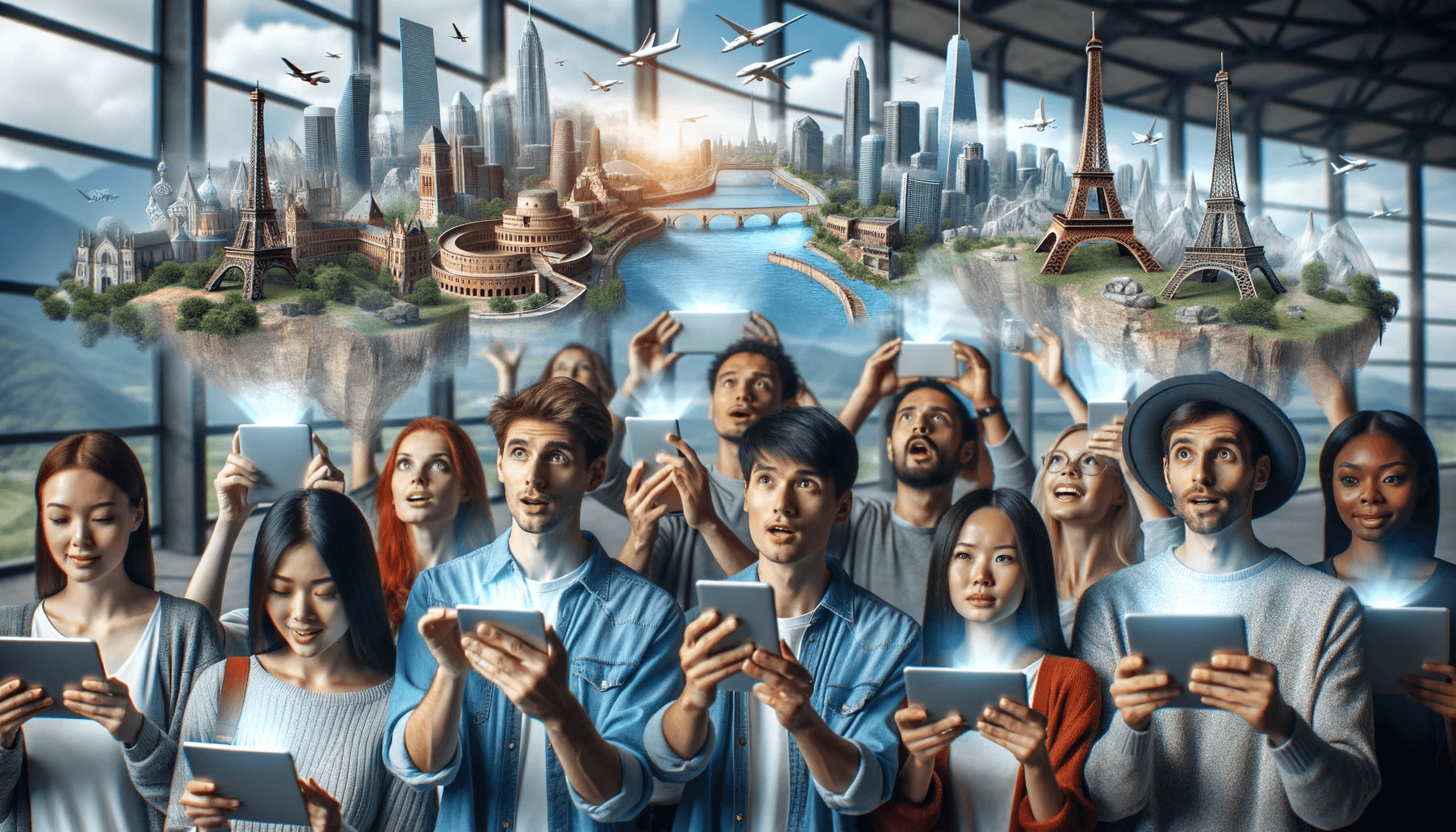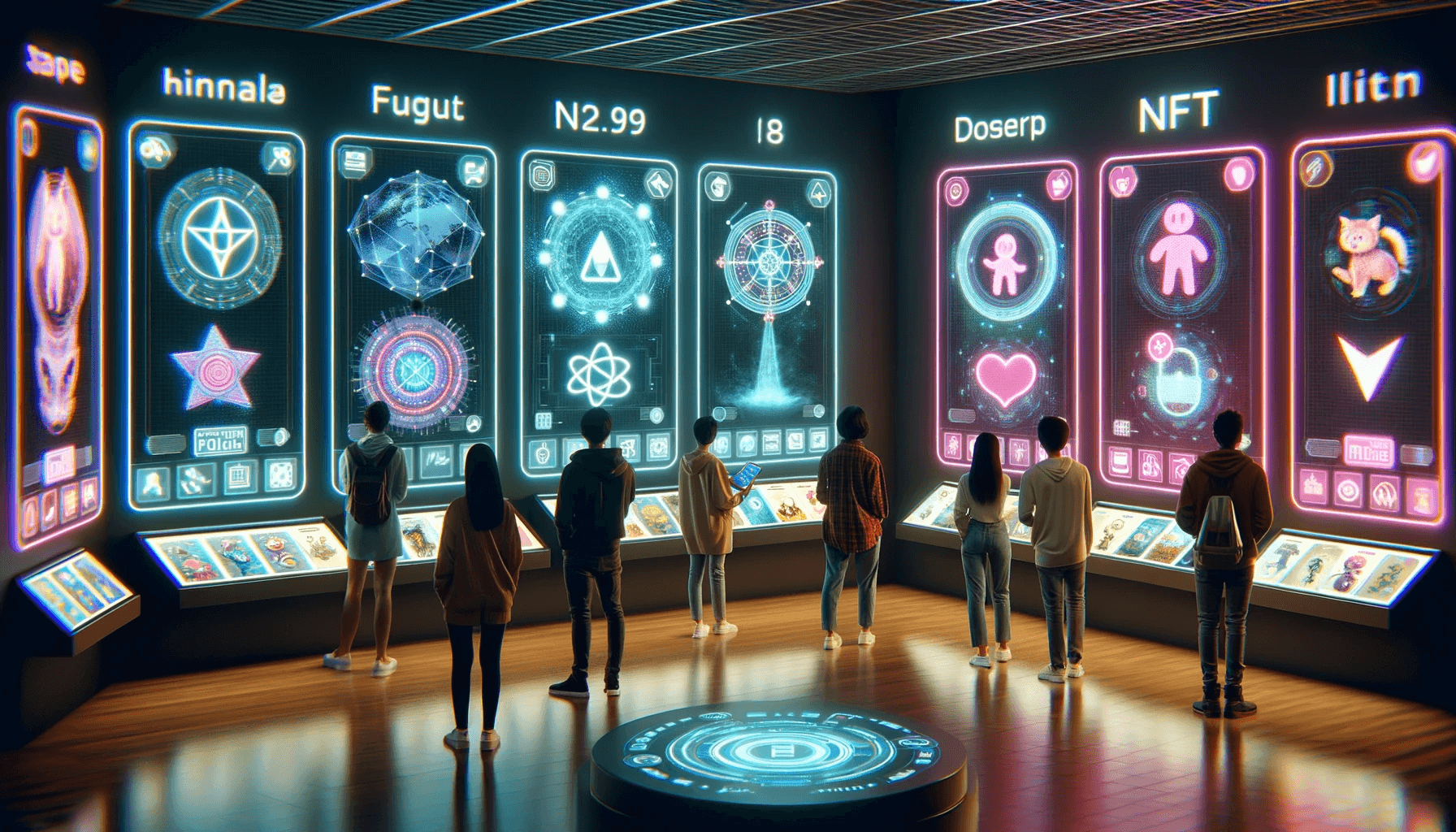Virtual travel and exploration apps have revolutionized the way we experience and explore the world. By bringing global destinations right to our fingertips, these apps offer a virtual window to the wonders of the world. Virtual travel and exploration apps are digital platforms that allow users to virtually visit and explore various locations, landmarks, and cultural sites from the comfort of their own homes.
These apps utilize technology such as virtual reality (VR), augmented reality (AR), and interactive multimedia to create immersive and lifelike experiences. With just a smartphone or a computer, users can embark on virtual tours, engage in interactive experiences, and learn about different cultures, history, and natural wonders.
The benefits of using virtual travel and exploration apps are numerous. Firstly, they provide access to worldwide destinations that may be challenging or impossible to visit physically. These apps offer a cost-effective alternative to physical travel, allowing users to explore famous landmarks and remote locations without incurring travel expenses.
Virtual travel and exploration apps offer educational and learning opportunities by providing immersive experiences and detailed information about various destinations. They enhance trip planning and preparation by allowing users to scout new locations, research attractions, and create itineraries before their actual travel.
Safety and convenience are also major advantages of virtual travel. Users can enjoy the experience without worrying about travel logistics, crowded tourist spots, or time constraints. These apps offer the flexibility to explore at one’s own pace and revisit favorite destinations at any time.
Some popular virtual travel and exploration apps to try include Google Earth, Airbnb Online Experiences, National Geographic VR, Wanderlust VR, and TripAdvisor Virtual Tours. These apps offer a range of features, including 360-degree views, guided tours, and interactive experiences.
To make the most of virtual travel and exploration apps, users can explore different destinations, engage in interactive experiences such as virtual tours or virtual reality walks, learn from local guides and experts, and interact with fellow virtual travelers through online communities.
However, it is important to acknowledge the limitations of virtual travel and exploration apps. These apps cannot fully replicate the physical and sensory experience of being in a location. The lack of physical presence and sensory stimuli such as smells and tastes may limit the authenticity of cultural immersion. Connectivity and technical requirements can also pose challenges, and users may depend on a stable internet connection and suitable devices for optimal experiences. Excessive reliance on virtual travel may lead to a sense of disconnection from the real world.
Key takeaways:
- Access to worldwide destinations: Virtual travel and exploration apps offer the opportunity to explore various destinations around the globe from the comfort of your own home.
- Cost-effective alternative to physical travel: Virtual travel eliminates the need for expensive flights, accommodations, and transportation, making it a more affordable option for those on a budget.
- Educational and learning opportunities: Virtual travel apps provide a platform for interactive learning, allowing users to acquire knowledge about different cultures, landmarks, and historical sites.
The World at Your Fingertips: Virtual Travel and Exploration Apps
The world is truly at your fingertips with virtual travel and exploration apps. These apps allow you to effortlessly explore different destinations and experience new cultures, all from the comfort of your own home.
- One such app is Google Earth, which provides a remarkable 3D representation of the Earth. With this app, you can virtually visit cities, landmarks, and natural wonders, bringing the world to life.
- If you’re planning a trip to a new city, Citymapper is the perfect tool. This app offers detailed public transportation information, helping you navigate like a local and make the most of your visit.
- To immerse yourself in different cultures, look no further than Culture Trip. This app offers a wealth of articles, videos, and recommendations for food, art, and more, allowing you to truly experience the richness of other cultures.
- Hiking and exploring the great outdoors is made even more exciting with PeakFinder. This app utilizes augmented reality to help you identify mountains and peaks around the world, adding an extra layer of adventure to your outdoor experiences.
- When it comes to stargazing, SkyView is a must-have app. By simply pointing your phone at the night sky, you can learn about constellations, planets, and stars, expanding your knowledge of the universe.
What Are Virtual Travel and Exploration Apps?
Virtual travel and exploration apps are digital platforms that allow users to virtually visit and explore different destinations around the world. These apps provide a realistic experience through interactive maps, 360-degree photos, and virtual reality technology. What Are Virtual Travel and Exploration Apps? Users can explore famous landmarks, natural wonders, and even museums or historical sites from the comfort of their own homes. These apps offer a convenient and cost-effective way to travel and discover new places, especially for those who are unable to physically travel or prefer to have a preview before planning a trip. What Are Virtual Travel and Exploration Apps? offer a unique and immersive way to experience the world without leaving home.
How Do Virtual Travel and Exploration Apps Work?
Virtual travel and exploration apps work by utilizing advanced technology and immersive features to provide users with a simulated travel experience. Here are the steps involved in how these apps work:
- Access the app: Download and install the virtual travel app on your device.
- Select a destination: Browse through the available destinations and choose the one you want to explore.
- Choose an experience: Depending on the app, you can select from various experiences like virtual tours, 360-degree videos, or interactive activities.
- Explore the destination: Use the app’s interface to navigate through the virtual environment, allowing you to visit landmarks, museums, and natural wonders.
- Interact with the environment: Engage with the virtual environment by zooming in, rotating the view, and interacting with informative pop-ups for a detailed experience.
- Learn and discover: Gain knowledge about the destination through audio guides, historical information, and interesting facts provided within the app.
- Connect with others: Some apps allow you to connect with fellow virtual travelers, enabling you to share experiences and recommendations.
- Personalization: Customize your virtual travel experience by selecting specific areas or attractions to focus on.
By following these steps, virtual travel and exploration apps transport users to different destinations, providing an interactive and educational alternative to physical travel.
How Do Virtual Travel and Exploration Apps Work?
Benefits of Virtual Travel and Exploration Apps
Virtual travel and exploration apps offer a multitude of benefits that make them incredibly appealing. From gaining access to worldwide destinations and saving costs on physical travel, to unlocking educational opportunities and enhancing trip planning, these apps truly have the world at your fingertips. Not only do they provide a convenient and safe experience, but they also offer a gateway to immersive learning and knowledge acquisition. So get ready to embark on a virtual journey like never before, all from the comfort of your own device.
1. Access to Worldwide Destinations
Access to worldwide destinations is one of the key benefits of virtual travel and exploration apps. These apps allow users to virtually visit and explore destinations across the globe without physically traveling. With virtual travel apps like Google Earth, National Geographic VR, and Airbnb Online Experiences, users can experience iconic landmarks, natural wonders, and cultural sites from the comfort of their homes. This provides an opportunity to discover and learn about different places and cultures that might otherwise be inaccessible. Whether it’s exploring the Great Barrier Reef or wandering through the streets of Tokyo, virtual travel apps offer a convenient and immersive way to access a wide range of worldwide destinations.
Pro-tip: Take advantage of virtual tour guides and experts available through these apps to enhance your understanding and experience of each destination.
2. Cost-effective Alternative to Physical Travel
Virtual travel and exploration apps offer a cost-effective alternative to physical travel, providing users with the opportunity to experience different destinations without incurring the expenses and logistical challenges typically associated with traditional travel. Here are several advantages of utilizing these apps:
- Significantly lower costs in comparison to flights, accommodations, and other expenses related to physical travel.
- No need to worry about visa requirements, travel insurance, or currency exchange.
- Flexibility to explore multiple destinations within a short period of time.
- Access to virtual tours, cultural experiences, and landmarks from the comfort of your own home.
There are various recommended virtual travel and exploration apps that offer cost-effective experiences, such as Google Earth, Airbnb Online Experiences, National Geographic VR, Wanderlust VR, and TripAdvisor Virtual Tours. With these apps, you can embark on affordable adventures right from the convenience of your device!
3. Educational and Learning Opportunities
Virtual travel and exploration apps offer a wide range of educational and learning opportunities to users. These apps provide access to worldwide destinations, allowing users to explore famous landmarks, historical sites, and natural wonders from around the globe. Through this virtual experience, users can gain valuable knowledge and enrich their learning.
Moreover, these apps offer interactive features that enable users to engage with the virtual environment. They can learn about different cultures, dive deep into the history and significance of various locations, and have an immersive experience.
In addition, virtual travel apps often provide guided tours led by local experts. Users can learn from these experts’ knowledge and gain unique insights into the destination’s culture, history, and traditions. It’s like having a personal teacher and tour guide in your pocket.
Furthermore, these apps foster a sense of community and shared learning. Users can connect with fellow virtual travelers who share similar interests. They can engage in discussions, learn from each other’s experiences, and build a sense of belonging.
While virtual travel may not provide physical and sensory experiences, it still offers a convenient and enriching platform for educational exploration. So, don’t miss out on the educational and learning opportunities that virtual travel apps provide. Start your journey today and expand your knowledge in a fun and interactive way!
4. Enhances Planning and Trip Preparation
Using virtual travel and exploration apps can greatly enhance your planning and trip preparation process. Here are some ways these apps can help:
1. Research destinations: Virtual apps allow you to explore different locations, giving you a better understanding of what to expect and helping you make informed decisions on where to go.
2. Gather travel information: These apps provide access to useful information such as attractions, accommodations, and local tips, helping you plan your itinerary more efficiently.
3. Visualize your trip: Virtual tours and immersive experiences offered by these apps allow you to visualize your trip in advance, giving you a clearer picture of what you will see and do.
4. Create a personalized itinerary: By using virtual apps, you can save and organize your favorite locations, activities, and attractions, making it easier to create a customized itinerary that suits your preferences.
Fact: According to a study, virtual travel and exploration apps enhance planning and trip preparation, leading to a more seamless travel experience with less time spent on planning.
5. Provides a Safe and Convenient Experience
Virtual travel and exploration apps provide a safe and convenient experience, offering a way to experience the world from the comfort of your own home.
- Safe experience: Virtual travel eliminates the risks associated with physical travel, such as accidents or exposure to dangerous locations.
- Convenient access: With virtual travel apps like Google Earth or TripAdvisor Virtual Tours, you can explore global destinations anytime and anywhere, without the need for travel arrangements or time constraints.
- Interactive features: These apps often provide interactive experiences, allowing users to navigate and explore destinations with just a few clicks or taps.
- Immersive content: High-quality visuals and multimedia content provide a realistic experience, enhancing the sense of actually being in the destination.
- Accessible information: Virtual travel apps offer detailed information about destinations, landmarks, and cultural highlights, making it easy to learn about different regions of the world.
Top Virtual Travel and Exploration Apps to Try
Embark on a journey of virtual exploration with the top travel and exploration apps at your fingertips! Get ready to be immersed in breathtaking landscapes, vibrant cultures, and awe-inspiring adventures. From Google Earth’s stunning satellite imagery to Airbnb’s virtual experiences offering a taste of local life, and National Geographic’s mind-blowing VR encounters, there’s no limit to the wonders you can discover. Indulge your wanderlust with Wanderlust VR and let TripAdvisor’s virtual tours guide you to uncharted destinations. Let’s dive into the virtual realm and unlock the world’s treasures like never before!
1. Google Earth
Google Earth is a popular virtual travel and exploration app that allows users to explore the world from the comfort of their own homes.
| Features of Google Earth | – 3D imagery of various destinations |
| – Street view for a realistic experience | |
| – Historical imagery to see the changes over time | |
| Benefits of Google Earth | – Access to popular landmarks and remote locations |
| – Free to use and available on multiple devices |
Pro-Tip: Use Google Earth to virtually visit places on your bucket list, plan future trips, and satisfy your wanderlust without leaving home!
2. Airbnb Online Experiences
Airbnb Online Experiences offer a unique way to virtually travel and explore different destinations from the comfort of your own home. Here are some reasons why you should consider trying Airbnb Online Experiences:
- Diverse Experiences: Airbnb Online Experiences provide a wide range of online experiences, including cooking classes and virtual tours, allowing you to immerse yourself in different cultures and activities.
- Interaction with Locals: Through Airbnb Online Experiences, you can connect with local hosts who will guide you through their hometowns, share their knowledge, and provide a personal touch to your virtual travels.
- Flexibility and Convenience: With Airbnb Online Experiences, you have the flexibility to join experiences at your preferred time from anywhere in the world, making it convenient for you to explore and learn without leaving your home.
Next time you’re looking for a unique travel experience, consider trying Airbnb Online Experiences for an immersive and interactive virtual adventure.
3. National Geographic VR
National Geographic VR is an exceptional virtual travel and exploration app. It provides users with immersive experiences. The app allows you to explore the Grand Canyon and the Serengeti, which are iconic natural wonders. Additionally, you can dive into cultural landmarks such as Machu Picchu and the Taj Mahal. The app also offers an opportunity to experience wildlife up close through 360-degree videos and interactive content. You can enhance your journey by using a VR headset, allowing for a truly immersive experience with National Geographic VR. Don’t forget to take advantage of the informative narrations provided by National Geographic experts.
4. Wanderlust VR
Wanderlust VR is one of the top virtual travel and exploration apps to try. Here are some steps to make the most of it:
- Download and install the Wanderlust VR app from your app store.
- Launch the app and explore the various destinations available.
- Select your desired location and use the app’s immersive technology for a realistic experience.
- Engage in interactive activities, such as virtual tours, 360-degree videos, or guided adventures.
- Connect with fellow virtual travelers through the app’s community features.
Pro-tip: Use a VR headset for a more immersive and enjoyable experience with Wanderlust VR.
5. TripAdvisor Virtual Tours
TripAdvisor Virtual Tours is a top virtual travel and exploration app that offers users the opportunity to experience destinations around the world from the comfort of their own homes. With a wide range of virtual tours available, users can explore famous landmarks, museums, and attractions through interactive 360-degree images and videos.
Through the TripAdvisor Virtual Tours platform, users can access immersive experiences and gain valuable insights from local guides and experts. This app provides a convenient and safe way to discover new places, learn about different cultures, and plan future trips.
It’s important to highlight that TripAdvisor Virtual Tours has certain limitations. These include the absence of physical and sensory experiences, connectivity and technical requirements, and limited authenticity in terms of cultural immersion. However, despite these limitations, TripAdvisor Virtual Tours offers a valuable alternative to traditional travel, especially in situations where physical travel is not possible.
How to Make the Most of Virtual Travel and Exploration Apps?
Get ready for an exhilarating virtual adventure as we dive into how to maximize the use of virtual travel and exploration apps. Discover new destinations, immerse yourself in interactive experiences, tap into the knowledge of local guides, and connect with fellow virtual travelers. With these apps at your fingertips, you’ll have access to a whole world of exploration, right from the comfort of your own home. So, fasten your seatbelts and let’s embark on a virtual journey like no other!
1. Explore Different Destinations
Exploring different destinations is one of the key benefits of virtual travel and exploration apps. These apps provide a unique opportunity to explore different destinations that may be difficult or impossible to reach physically. With apps like Google Earth and National Geographic VR, users can virtually travel to locations across the globe, from famous landmarks to remote landscapes. By exploring different destinations, users can broaden their horizons, learn about different cultures, and satisfy their wanderlust without leaving their homes. So, whether you want to visit the Great Wall of China or the Serengeti, virtual travel apps offer an immersive experience that allows you to explore different destinations at your own pace.
If you’re looking for more destinations to explore, you can also try Wanderlust VR, TripAdvisor Virtual Tours, or Airbnb Online Experiences. These apps offer a wide range of virtual travel experiences, allowing you to immerse yourself in different cultures, cuisines, and activities. So, grab your phone or VR headset and start your virtual adventure today!
2. Engage in Interactive Experiences
Engaging in interactive experiences is a key feature of virtual travel and exploration apps. These apps provide users with opportunities to participate in immersive activities and engage in interactive experiences with their virtual surroundings. Here are some ways to make the most of this interactive aspect:
- Embark on virtual tours with 360-degree views, allowing you to explore destinations from different angles.
- Participate in interactive games and challenges that engage you in interactive experiences and test your knowledge and skills about various locations.
- Connect with local guides and experts who can provide personalized insights and engage you in interactive experiences and engage in real-time conversations.
- Interact with fellow virtual travelers through chat features or online forums, sharing experiences and recommendations.
By actively engaging in interactive experiences, you can enhance the sense of exploration and connection that virtual travel apps offer.
3. Learn from Local Guides and Experts
To maximize your virtual travel experience, take advantage of the opportunity to learn from local guides and experts. These virtual travel and exploration apps offer valuable insights and knowledge about different destinations around the world. Engage in interactive experiences that allow you to connect with locals who can share their expertise and insider tips. Whether it’s a virtual tour with a local historian or a cooking class with a renowned chef, you have the chance to learn from these guides and experts who are well-versed in their respective fields. This adds depth and authenticity to your virtual travel experience as you embrace the opportunity to expand your knowledge and immerse yourself in the local culture even from afar.
4. Interact with Fellow Virtual Travelers
Interacting with fellow virtual travelers is a fundamental element of virtual travel and exploration apps, fostering a strong sense of community and shared experiences. Through chat platforms or discussion forums, users can connect and share travel tips, stories, and recommendations with other like-minded individuals. Additionally, they can actively participate in group activities such as virtual tours or experiences, where they have the opportunity to interact with other travelers, ask questions, and learn from each other. Joining virtual travel communities also opens up doors to collaborative projects, like engaging in virtual photo challenges or working together on travel guides. Through these collaborative efforts, users enhance their collective knowledge and creativity. Moreover, virtual travelers can experience cultural exchange by connecting with fellow travelers from different backgrounds, allowing for a deeper understanding of diverse perspectives.
| Connect and share | Engage with other users through chat platforms or discussion forums to exchange travel tips, stories, and recommendations. |
|---|---|
| Group activities | Participate in virtual tours or experiences where you can interact with other travelers, ask questions, and learn from each other. |
| Collaborative projects | Join virtual travel communities to collaborate on projects like virtual photo challenges or travel guides, enhancing the collective knowledge and creativity. |
| Cultural exchange | Connect with travelers from different backgrounds, enabling cultural exchange and gaining insights into diverse perspectives. |
Limitations of Virtual Travel and Exploration Apps
Virtual travel and exploration apps have revolutionized how we experience the world, but they also come with limitations. Let’s dive into these limitations and how they can impact our virtual journeys. From the lack of physical and sensory experiences to connectivity issues and technical requirements, we’ll explore the challenges faced by users. We’ll uncover the limited authenticity of cultural immersion and the potential risks of overuse and dependency. Buckle up as we navigate the constraints of virtual travel and see what lies beyond our fingertips.
1. Lack of Physical and Sensory Experience
Virtual travel and exploration apps allow users to visit destinations and experience new cultures from the comfort of their own homes. One important limitation to consider when using these apps is the lack of physical and sensory experience. While virtual tours can impress users with stunning visuals and provide informative narratives, they cannot fully replicate the feeling of being physically present or the sensory aspects of a destination, including the smells, sounds, and touch. This limitation becomes crucial for individuals seeking a more immersive travel experience, as these apps cannot deliver the complete sensory engagement. However, despite this limitation, virtual travel apps remain a valuable tool for exploring and learning about the world, particularly in situations where physical travel is not possible.
The Apollo 11 moon landing in 1969 stands as a monumental event in human history. Astronauts Neil Armstrong and Buzz Aldrin etched their names as the pioneers who first set foot on the moon, while Michael Collins observed from above in the command module. This historic achievement symbolizes the culmination of years of tireless work by countless scientists, engineers, and astronauts. The moon landing not only showcased the remarkable capabilities of human technology but also ignited a lasting inspiration for generations to continue their exploration of the vast cosmos. It remains an iconic moment that exemplifies humanity’s unwavering drive for discovery and exploration.
2. Connectivity and Technical Requirements
- Connectivity and technical requirements are essential when utilizing virtual travel and exploration apps.
- A stable internet connection is crucial for fully enjoying virtual travel experiences. Slow or intermittent connections can disrupt the immersive experience.
- Make sure your device (whether it’s a smartphone, tablet, or computer) meets the software and hardware requirements of the app.
- If you’re using virtual reality (VR) apps, you might need additional equipment like VR headsets or controllers. Check if the app supports the VR equipment you already have or if you need to invest in compatible devices.
- Virtual travel apps often require significant storage space on your device for downloaded maps, videos, or 3D models. Ensure that you have enough available storage or consider clearing space before downloading the app.
- Some virtual travel apps offer high-resolution videos or 360-degree views, which can consume a lot of data. If you have limited data plans or are using a public Wi-Fi network, be aware of potential data usage and costs.
3. Limited Authenticity of Cultural Immersion
While virtual travel and exploration apps offer many benefits, one limitation is the limited authenticity of cultural immersion.
- Virtual experiences lack the sensory elements and in-person interactions that provide a deeper understanding of different cultures.
- Authentic cultural immersion involves immersing oneself in the local environment, customs, and traditions, which virtual apps can only partially emulate.
- Language barriers and cultural nuances may not be fully captured, limiting the richness of the experience.
- To overcome this limitation and address the limited authenticity of cultural immersion, users can supplement their virtual experiences by engaging in conversations with locals, reading literature, or participating in cultural events.
4. Potential Overuse and Dependency
Potential overuse and dependency on virtual travel and exploration apps can have some drawbacks:
- Lack of Real Experiences: Virtual travel cannot fully replicate the physical and sensory aspects of actual travel, such as feeling the atmosphere or tasting local cuisine.
- Connectivity and Technical Requirements: Depending on internet connections and device capabilities, users may face interruptions and limitations during their virtual travel experiences.
- Limited Authenticity: While virtual travel offers glimpses into different cultures and destinations, it cannot provide the full immersive experience of being physically present in a location.
- Potential Overuse and Dependency: Relying solely on virtual travel can result in a lack of motivation to explore the world outside the digital realm, limiting personal growth and experiences.
In the 1990s, virtual reality technology gained popularity, leading to the development of virtual travel and exploration apps. As the internet and technology continue to advance, these apps offer convenient and engaging ways to explore the world from the comfort of our homes. It is important to be aware of the potential overuse and dependency on these apps, as relying solely on virtual travel can hinder personal growth and limit real-world experiences. Instead, virtual travel should be used as a supplement to physical travel, ensuring a balance between exploring the digital realm and cultivating a sense of curiosity and adventure in the physical world.
Frequently Asked Questions
How can I travel and explore the world while staying safe during the global pandemic?
Virtual travel and exploration apps offer a solution for exploring the world from the comfort of your home. With advanced UX platforms and cutting-edge technologies like 360-degree videos and virtual reality projects, you can visit your favorite places or discover hidden gems without exposing yourself to crowded places or compromising your safety.
Are there any platforms that connect users with live local experts for virtual tourism experiences?
Yes, platforms like Amazon Explore allow users to connect with live local experts who can serve as tour guides, teachers, and even personal shoppers. With these platforms, you can customize your virtual travel experience and gain insights from locals who know the top tourist attractions, interesting stories, and hidden places in different cultures.
Can I make an income through virtual travel and exploration apps?
Yes, some virtual travel platforms offer opportunities for individuals to make money. For example, Amazon Explore allows experts to offer their services and earn money by sharing their knowledge and experiences with virtual travelers. This creates an online oasis for earning an income while providing economically accessible experiences for virtual tourists.
How can I enjoy virtual travel experiences without investing in expensive equipment?
You don’t need expensive equipment to enjoy virtual travel. Platforms like AirPano offer free 360-degree videos and photos that can be accessed using a regular computer or smartphone. Additionally, Google Cardboard is an affordable way to experience virtual reality. You can either build your own set or purchase a kit and use it with various platforms like the Google Cardboard app and YouTube travel channels.
Are there any last-minute hotel booking apps available for spontaneous travelers?
Yes, there are last-minute hotel booking apps like HotelTonight, Booking.com’s Tonight app, and Blink Booking. These apps allow users to find and book hotel rooms at discounted prices on the same day in over 150 cities worldwide. They offer flexibility and convenience for business travelers, local leisure travelers, and adventurous individuals looking for a bargain.
Can I securely make payments while on the move using travel apps?
Yes, digital wallets like Visa’s V.me and platforms like Weve provide secure ways to store and use various payment services on your mobile phone. With these digital wallets, you can make contactless payments wherever accepted and earn loyalty points. As mobile commerce platforms, they offer convenience and security for travelers who want to embrace spontaneity and stay connected while making secure payments.






